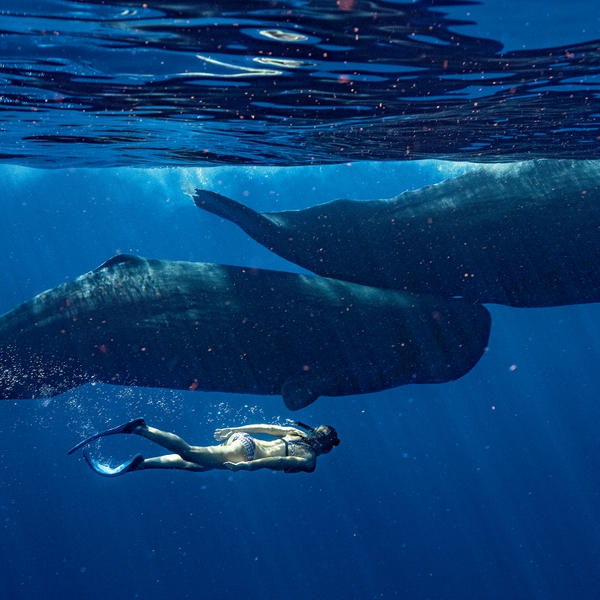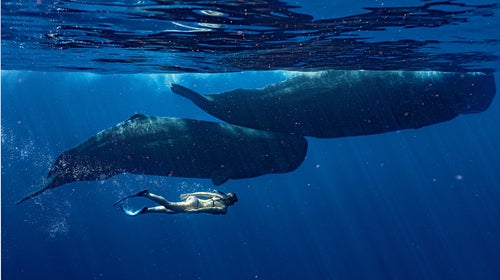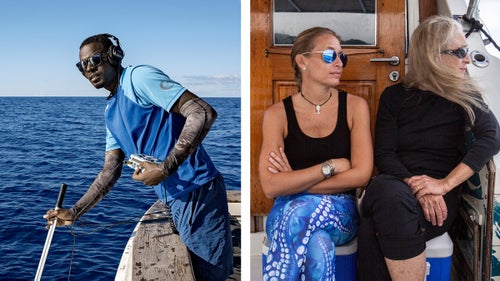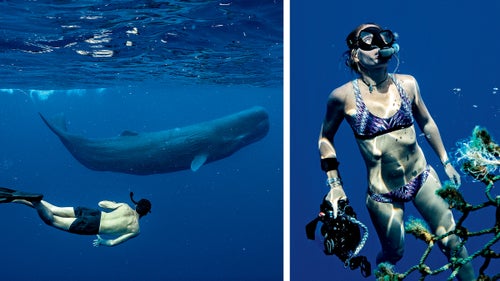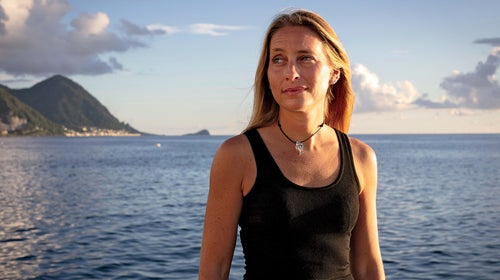What I Saw When I Came Eye to Eye with a Whale
Sperm whales are extraordinarily intelligent animals with deep family traditions and the ability to communicate across oceans with sonic clicks. But when Rowan Jacobsen had a close encounter with one in the Caribbean, he saw a creature far stranger than he'd ever imagined.
New perk: Easily find new routes and hidden gems, upcoming running events, and more near you. Your weekly Local Running Newsletter has everything you need to lace up! .
Three miles off the coast of Dominica, on a flat blue Caribbean sea, Pernell Francis lowers a hydrophone into the water and slides a pair of headphones over his ears. Captain Jerry kills the engines on the Southern Cross, his sportfishing boat, and the other two people on board, the marine scientist and her mother, Stacy, get superstitiously quiet.
It’s eight o’clock in the morning on November 21, and we’re listening for the sounds of the world’s brainiest and most charismatic megafauna.
Dominica is one of the best places in the world to interact with sperm whales, and each year the government grants a handful of permits that allow scientists and photographers to get in the water with them. Gaelin’s permit is for Visual Assessment of Potential Stressors on Physeter macrocephalus. Her goal is to produce a photographic record of Dominica’s whales, looking for signs of injury incurred from things like ships and fishing gear. She’s also hoping to make a film about our species’ complicated relationship with sperm whales. Pernell, a local Dominican who’s been called the whale whisperer for his uncanny ability to find them, is our guide.
Sperm whales communicate across miles of ocean using a complex language of sonic clicks. By listening to the hydrophone, Pernell can tell if they are near or far, diving or surfacing, feeding or cruising. He rotates the pole, pointing the device in every direction, face tight with concentration.
Behind Pernell, Dominica looms. A precipitative pile of rainforest, with countless waterfalls cascading down its 4,000-foot flanks, it has almost no natural harbors, very little nautical traffic, and deep underwater canyons teeming with large squid. It’s an ideal place for sperm whales.
But they don’t always show. Just ask Gaelin, who is standing beside me with crossed fingers and is whispering whales, whales, whales. At more than $3,000 a day for the boat, guide, and other appurtenances, the project is a major gamble. To raise the full funding for the film, she needs some killer footage, and for that she needs whales. In 2018, she secured a permit, hired Pernell, and got skunked—five days on the water, a whole lot of silence in the hydrophones. The island’s parting gift was a flash flood at the airport that nearly swept Gaelin, Stacy, and their camera cases out to sea. Now she’s back for one more try.
But as Pernell pulls off his headphones, the early verdict is not encouraging. “It’s quiet,” he says. “Nothing within three miles. We gotta keep going.”
I feel Gaelin deflate a little. Trained in coastal environmental management, she now describes herself as both a scientist and a storyteller. She tagged Atlantic bluefin tuna in graduate school, but after watching her research subjects slide toward extinction, with the population declining some between 1957 and 2007, she shifted to advocacy. In 2008, she founded , which organizes research expeditions and documents the work of scientists through photography and video. More than a decade later, she has partnered with scientists in the Arctic, Antarctic, and many places in between. “It’s about bringing back stories of expeditions that people can relate to,” she says, “as opposed to just writing scientific papers.” Recent trips have taken her to Palau, to make a short about climate-resilient corals, and to the bottom of Belize’s Blue Hole with Richard Branson and Fabien Cousteau, a grandson of Jacques.
Gaelin’s film concept is inspired by a close encounter she had with a sperm whale as a child, which helped set her life’s course. (pronounced “feisty,” a play on Physeter macrocephalus) was a young sperm whale that tried to beach himself on Coney Island in 1981. Sick with a mystery illness and being battered by waves, Physty was towed to a nearby boat basin for rehab.
At the time, well over a thousand sperm whales were still being killed by humans each year, and Physty made their plight personal. Floating on his side in the basin, weak and disoriented, he became a national sensation. Thousands of people traveled to the harbor to root for his recovery.
Among them was Stacy Rosenwaks and her young son and daughter. “We went every other day to watch the vets take care of him,” Stacy says. “We were right there next to him. You could smell his breath, see his spray.”
“I remember being so close and seeing his eye,” says Gaelin. “I wasn’t quite two years old yet, but that moment of interaction was really powerful.”
